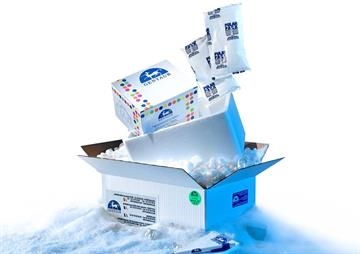- Categories
- Specials and Offers
- Custom Services
- Products
Mouse Liver Endothelial Cells


Mouse Liver Endothelial Cells
0.01 €Ask for quotation
On request
quantity
product details
Catalog number: 870 - ABC-TC3930
Product Category: Business & Industrial > Science & Laboratory
AcceGenGentaur
Size: 1 vial
Related Products
ABC-TC3670
Human Liver Endothelial Cells
Human liver endothelial cells are derived from purified CD34+ liver cells. These cells are from a single donor. They are characterized by acetylated low density lipoprotein (Dil-Ac-LDL) fluorescent staining and immunofluorescent staining with antibodies to vWF/Factor VIII and CD31 (PECAM). Human liver endothelial cells are used for experimental applications such as cardiovascular pharmaceutical development, macromolecule transport, angiogenesis and vascularization studies.Development period: Prenatal
Ask for quotation
ABC-TC3930
Mouse Liver Endothelial Cells
Mouse liver endothelial cells, 5-week ICR mouse
Ask for quotation
ABC-TC3679
Human Liver Sinusoidal Endothelial Cells
Endothelial cells play multiple physiological functions and are central to many pathological processes. The liver contains two distinct endothelial cell types: vascular and sinusoidal. Sinusoidal endothelial cells (SEC) are microvascular endothelial cells with a unique phenotype reminiscent of dendritic cells and a unique function as antigen-presenting cells for CD4+ T cells. Thus, SEC represent a new type of organ-resident "non-professional" antigen-presenting cell that appears to be involved in the local control of the immune response and the induction of immune tolerance in the liver. The hepatic microenvironment, i.e. portal venous constituents and soluble mediators from sinusoidal cell populations, tightly control antigen presentation by SEC to avoid immune-mediated damage. SEC express well-characterized surface receptors and differ morphologically and metabolically from large-vessel endothelia. It has reported that SEC are dynamic regulators of porosity that respond rapidly and locally to environmental zonal stimuli during liver regeneration. Due to its strategic position in the liver sinusoid, SEC dysfunction and structural alterations have far-reaching repercussions for the whole liver. HHSEC from Gentaur Research Laboratories are isolated from human liver. HHSEC are cryopreserved immediately after purification and delivered frozen. Each vial contains 5×10^5 cells in 1 ml volume. HHSEC are characterized by immunofluorescent method with antibodies to vWF/Factor VIII and CD31 (P-CAM). HHSEC are negative for HIV-1, HBV, HCV, mycoplasma, bacteria, yeast and fungi. HHSEC are guaranteed to further expand for 15 population doublings in the conditions provided by Gentaur Research Laboratories.
Ask for quotation
ABC-TC3205
C57BL/6 Mouse Liver Cells
Mouse primary liver cells (MPLIC) are isolated from tissue of pathogen-free laboratory mice. Mouse primary liver cells are mixed population of mouse liver cells grown in T75 tissue culture flasks pre-coated with 0.2% gelatin for 0.5 hour and incubated in Culture Complete Growth Medium generally for 3-7 days.
Ask for quotation
ABC-TC3288
CD-1 Mouse Liver Cells
Mouse Primary Cells from Gentaur are isolated from tissue of pathogen-free laboratory mice. Mouse Cells are grown in T25 tissue culture flasks pre-coated with gelatin-based solution for 0.5 hour and incubated in Gentaur's Cell Culture Medium generally for 3-7 days. Cultures are then expanded. Prior to shipping, cells are detached from flasks and immediately cryo-preserved in vials. Each vial contains at least 1x10^6 cells per ml and is delivered frozen.Mouse Cells are negative for bacteria, yeast, fungi, and mycoplasma. Repeated freezing and thawing of cells is not recommended.Standard biochemical procedures performed with cell cultures include RT-PCR, Western blotting, immunoprecipitation, immunofluorescent staining, flow cytometry or generating cell derivatives for desired research applications.









